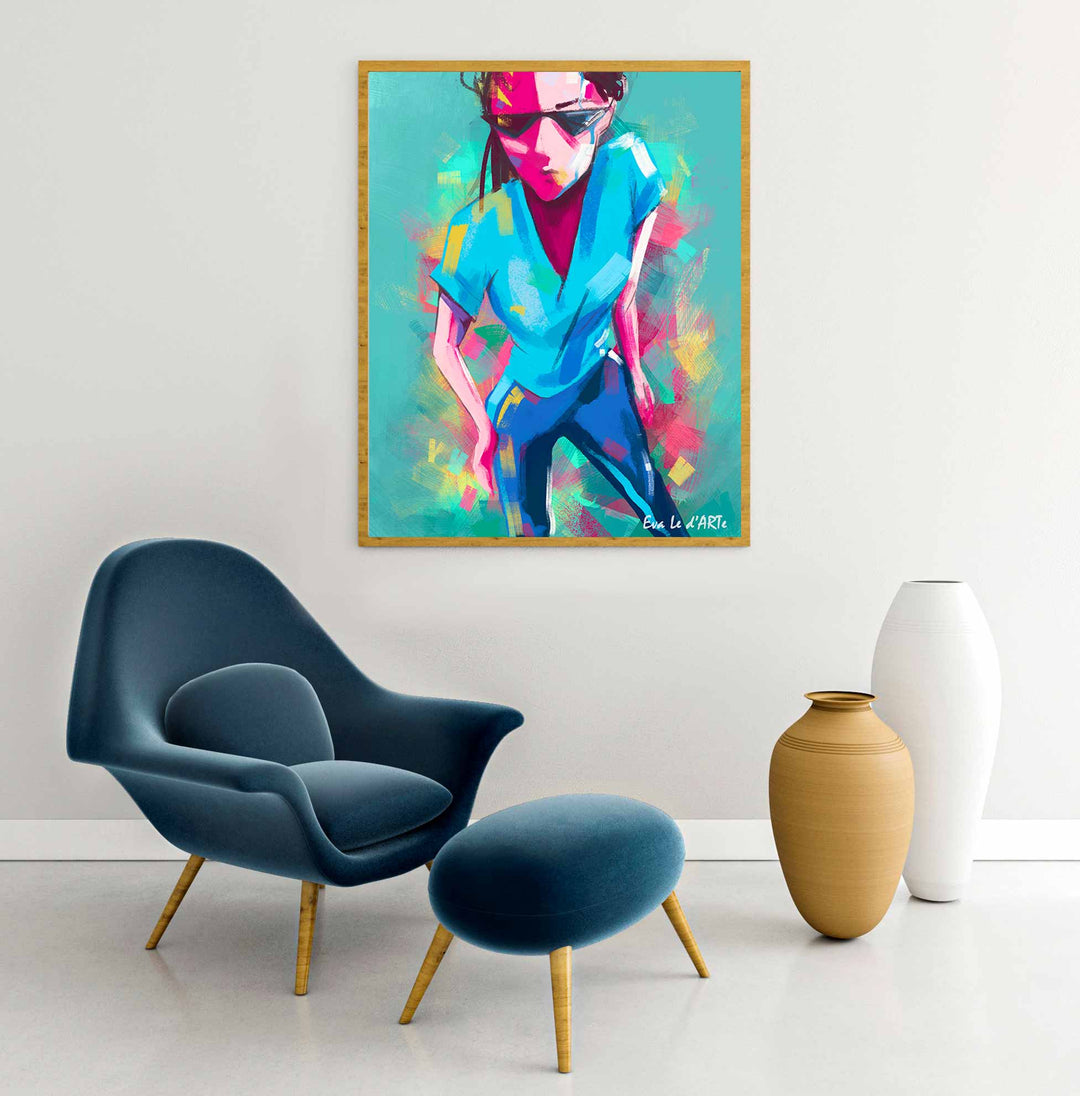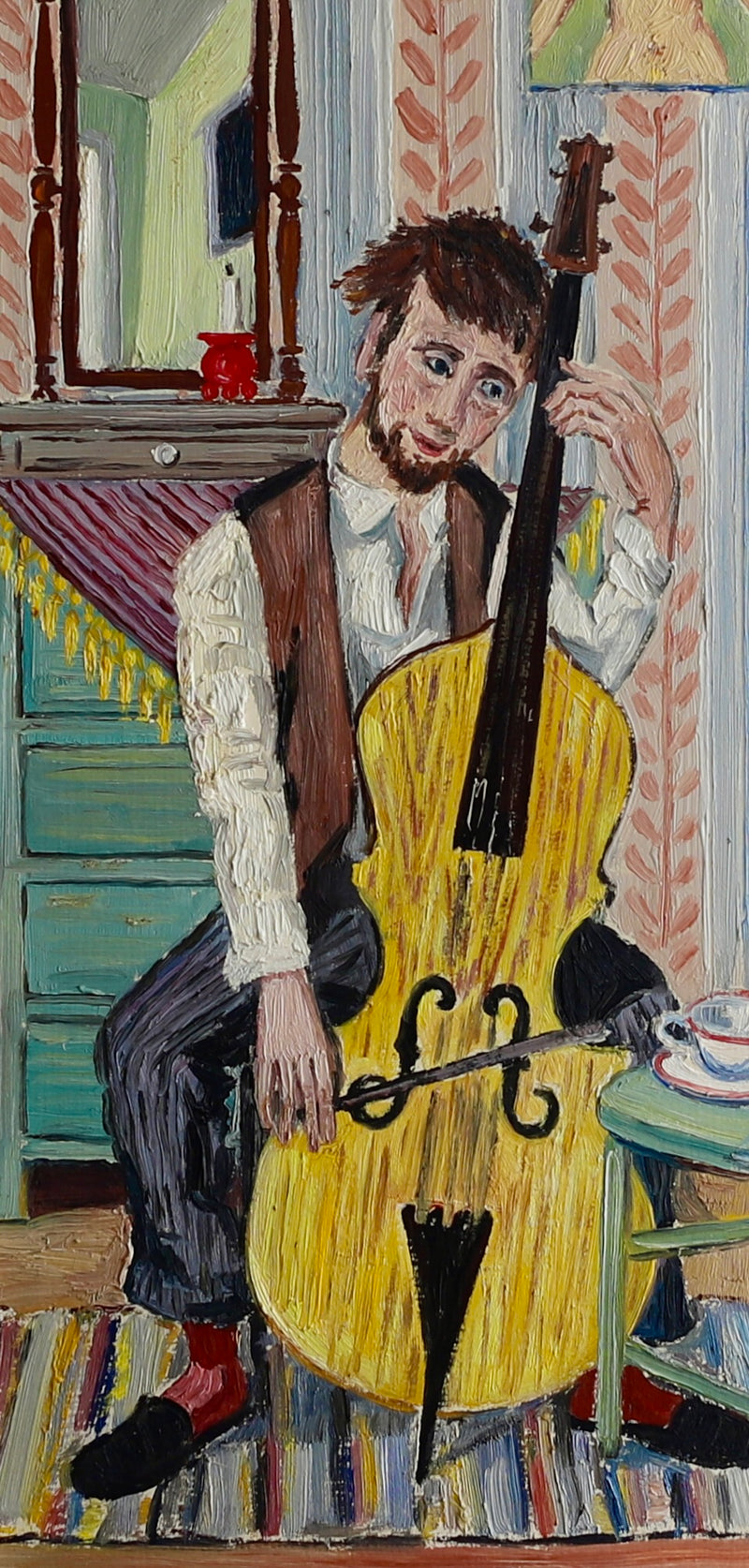Exploring Iconic Artists and Their Influences on Figurative Oil Painting
The Function of Emotion and Expression in Figurative Oil Paint: A Comprehensive Evaluation of Subject and Make-up
The interplay of feeling and expression in metaphorical oil paint offers as a crucial lens with which one can take a look at the detailed partnership between subject issue and composition. Artists harness numerous techniques, from color choice to brushstroke characteristics, to cultivate psychological resonance within their works.
Recognizing Emotion in Art
Feeling in art offers as a powerful channel for expression, permitting artists to share intricate sensations via their work. In metaphorical oil paint, this psychological deepness is typically portrayed through the depiction of the human number, recording the nuances of human experience. The choice of topic, color combination, and brushwork all add to the psychological resonance of an item.
Artists frequently draw upon individual experiences, social issues, or global themes to stimulate feelings in the customer. For instance, a picture may mirror vulnerability, while a vibrant number in motion can symbolize freedom or turmoil. These psychological strings attach the audience to the artwork, cultivating a discussion that transcends the aesthetic tool.
Additionally, the interplay in between light and darkness can intensify emotional intensity, directing the audience's look and accentuating particular aspects within the structure. Using appearance in oil painting additionally includes layers of intricacy, inviting a tactile feedback that enhances the psychological experience. On the whole, recognizing emotion in art is important for appreciating the subtleties that identify metaphorical oil paint, as it transforms plain depiction right into a profound exploration of the human problem.
Key Aspects of Make-up
In the world of metaphorical oil painting, the composition acts as the underlying structure that organizes visual components and boosts the emotional narrative. Important components of make-up consist of balance, contrast, prime focus, and rhythm, each adding to the general influence of the art work.
Balance describes the circulation of visual weight within the painting, which can be achieved via unbalanced or symmetrical arrangements. A healthy composition provides security, allowing the customer to involve with the piece harmoniously - figurative oil painting. Contrast, on the various other hand, includes comparing different aspects, such as light and dark or cozy and great colors, to lead the customer's eye and stimulate psychological feedbacks
The focal point is critical, as it guides attention to the most substantial component of the painting, commonly highlighting the emotional core of the narrative. With techniques like shade saturation or placement, musicians can highlight this location properly. Finally, rhythm pertains to the repeating of elements, developing a sense of motion and circulation throughout the composition. By skillfully integrating these crucial elements, musicians can craft compelling and mentally powerful metaphorical oil paints that astound and engage their target market.
Topic and Its Impact
Subject matter plays an essential duty in metaphorical oil painting, as it not only functions as the foundation for the narrative however also shapes the viewer's interpretation and emotional interaction with the artwork. The choice of topic-- be it a singular figure, a team dynamic, or a thematic depiction-- straight affects the emotional atmosphere communicated to the audience.

As an example, portraits frequently evoke individual links, exposing the complexities of human expression and personality, while scenes illustrating common activities can create a sense of belonging or fond memories. The historic and social context of the subject matter improves the audience's understanding, motivating deeper reflections on societal norms, worths, and the human problem.
Different subjects also produce differing levels of interaction; a dramatic dispute shown through numbers in stress might evoke feelings of stress and anxiety or compassion, while tranquil landscapes can conjure up tranquility and consideration. Inevitably, the influence of subject issue in figurative oil painting is profound, as it functions resource as a conduit for psychological vibration, directing the viewer's action and analysis, and fostering a connection in between the observer and the artwork. This interplay is essential for the effective interaction of the musician's intent.
Techniques for Evoking Sensations
The effectiveness of figurative oil painting in communicating feelings is substantially affected by the strategies employed by the artist. One of one of the most vital methods is making use of color concept, where the tactical choice of shades can stimulate certain psychological responses. Cozy shades, such as oranges and reds, frequently generate sensations of enthusiasm or aggression, while cooler tones like blues and greens have a tendency to stimulate calmness or unhappiness.
One more vital strategy is the adjustment of light and shadow, called chiaroscuro. This technique enhances the three-dimensionality of figures, creating dramatic contrasts that can intensify psychological deepness. The placement of light can direct audiences' feelings, highlighting details components of the composition.
Brushwork additionally plays a critical role; loose, meaningful strokes can communicate energy and spontaneity, whereas smoother techniques could recommend harmony or precision. Additionally, the arrangement of topics within the composition can affect emotional impact. Close distance can suggest intimacy, while range might indicate isolation.
Eventually, the combination of these strategies allows musicians to craft narratives that resonate with the customer, transforming a plain visual experience right into an expressive emotional trip. - figurative oil painting

Study of Remarkable Works
Examining significant works of figurative oil paint reveals exactly how different strategies are utilized to stimulate effective emotions. One excellent case is Edvard Munch's "The Scream," where the altered number and swirling background communicate existential fear. Munch's use color-- deep blues and dazzling oranges-- escalates the emotional effect, showcasing just Home Page how scheme choices can shape visitor experience.
One more considerable work is Pablo Picasso's "Les Demoiselles d'Avignon." Right here, fragmented forms and bold brushstrokes mirror a troubled psychological landscape, testing traditional representations of the female number. Picasso's cutting-edge structure not only captures the audience's focus yet likewise welcomes consideration on motifs of identity and sexuality.
Additionally, Frida Kahlo's "The Two Fridas" offers a poignant expedition of duality and self-identity. The contrasting figures, connected by a shared heart, exemplify Kahlo's psychological depth and personal story. figurative oil painting. Her careful attention to detail and symbolic elements offer to involve audiences on a visceral level
These situation research studies underscore the extensive connection in between feeling and structure in figurative oil paint, exposing exactly how artists harness technique to connect complicated feelings and narratives that reverberate across time and society.

Conclusion
In verdict, the interplay of feeling and expression in figurative oil paint considerably enhances the visitor's experience and interpretation of the art work. Via a cautious option of subject and compositional techniques, musicians convey extensive stories that resonate on both universal and personal levels. The application of shade chiaroscuro, concept, and brushwork further intensifies emotional depth, changing each canvas right into a powerful reflection of the complexities of the human experience.
In metaphorical oil paint, this psychological deepness is frequently represented through the depiction of the human figure, capturing the nuances of human experience.In addition, the interaction between light and darkness can enhance psychological intensity, assisting the audience's look and attracting focus to particular elements within the structure. The use of appearance in oil paint further adds layers of complexity, inviting a responsive response other that enhances the emotional experience.The focal point is vital, as it routes attention to the most significant part of the painting, typically highlighting the emotional core of the narrative. Eventually, the effect of subject matter in figurative oil paint is profound, as it serves as a channel for emotional resonance, directing the audience's action and analysis, and cultivating a link in between the onlooker and the art work.